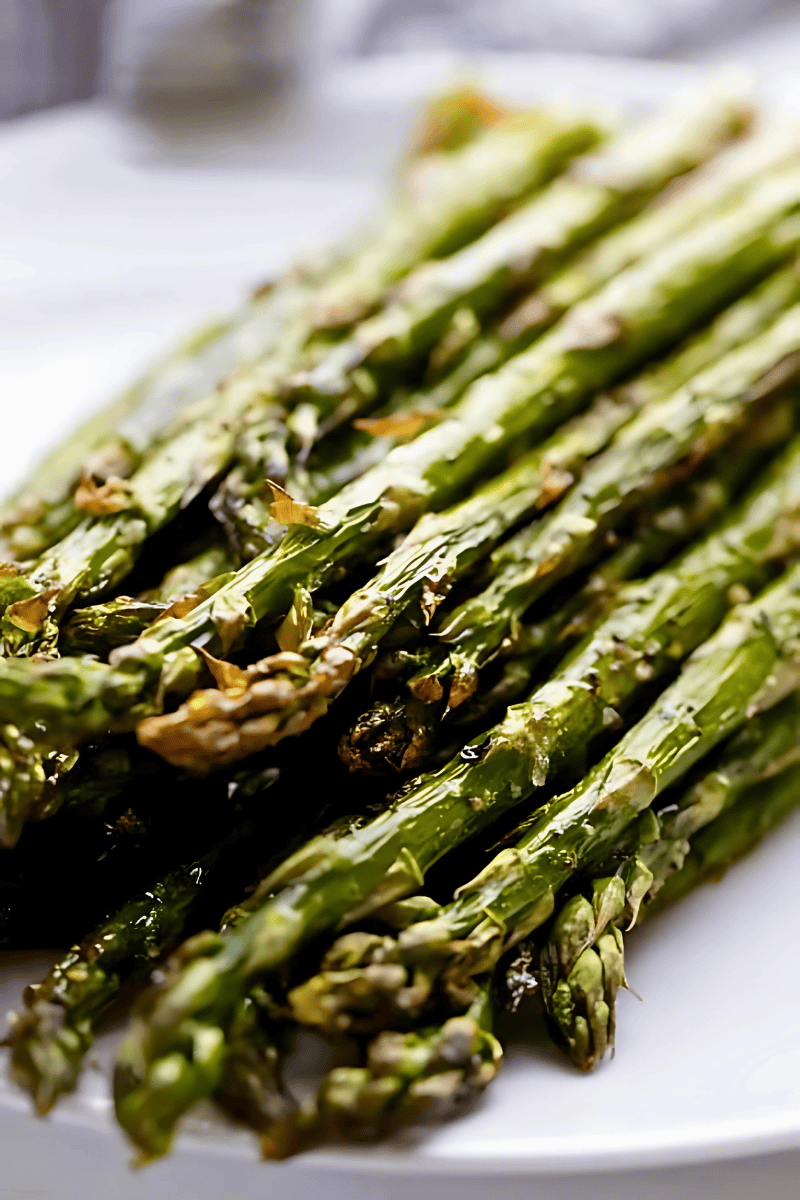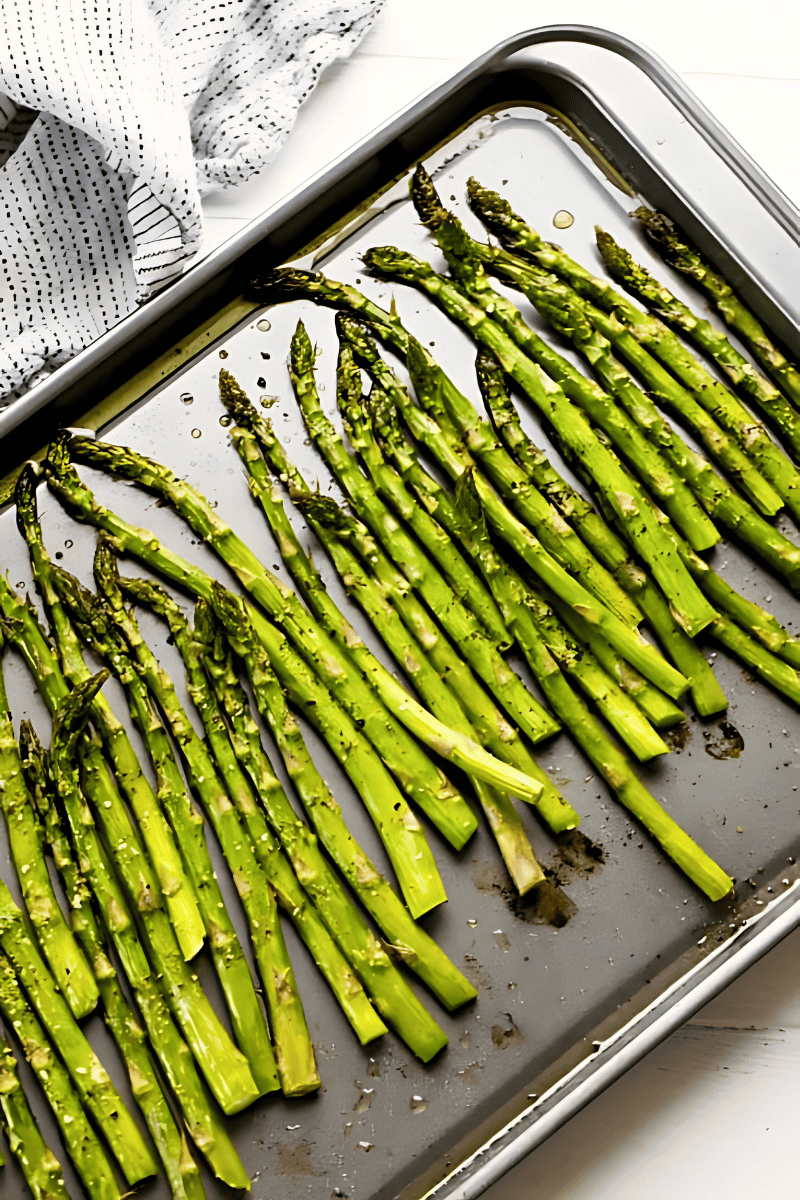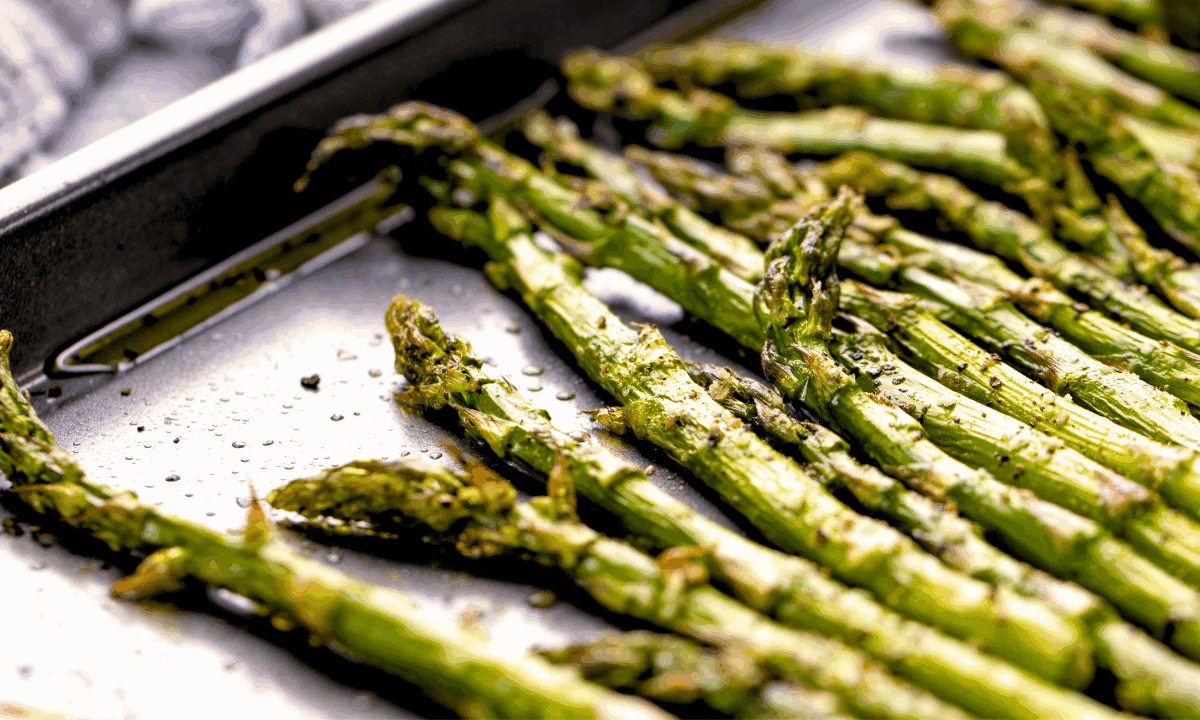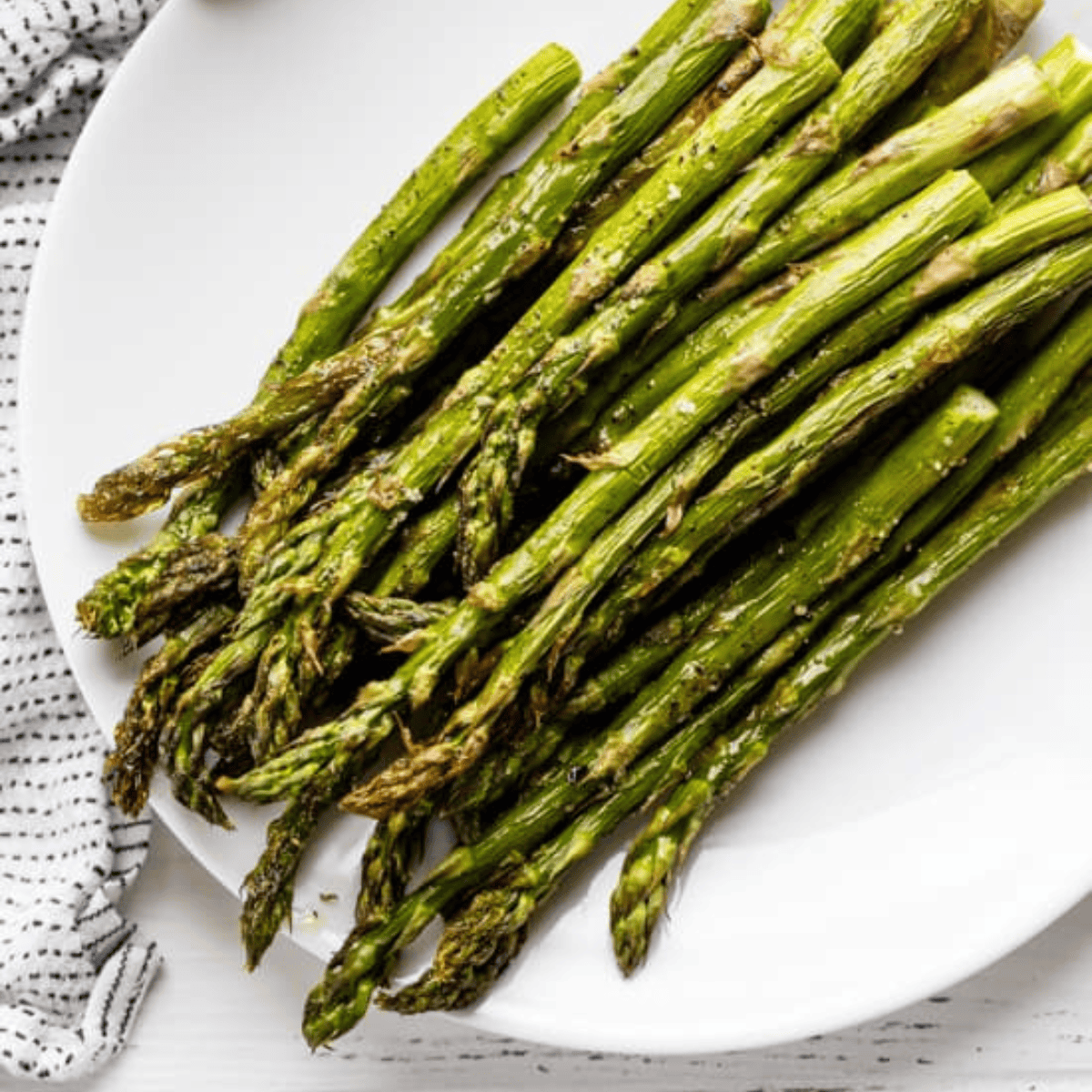Roasting asparagus is a quick and foolproof way to bring out its natural flavor. With a little olive oil, salt, and pepper, you can transform fresh spears into a delicious side dish that goes well with almost anything, from meats and fish to pasta and salads.
For an alternative way to cook asparagus, check out this lemon parmesan air fryer asparagus.

Why My Recipe
- Keeping it simple for perfectly seasoned asparagus in just 15 minutes.
- Quick oven-roasting method brings out the natural flavor, crisping up the outside, while leaving the inside tender.
- Includes tips for selecting and storing asparagus for best results.

Fresh asparagus is available all year, but it truly shines in the spring when the spears are at their natural seasonal peak in flavor and texture. Once you learn how to pick good asparagus and store it correctly, you’ll have an easy go-to veggie side you can whip up any night of the week.
Ingredient Notes
- Fresh Asparagus: Look for spears that are bright green, firm, and straight with tightly closed tips. Avoid any that are limp, slimy, or have mushy or darkened tips.
- Extra Virgin Olive Oil: Adds flavor and helps the asparagus roast evenly. Regular olive oil will also work.
- Salt: Kosher or sea salt is ideal for better flavor control.
- Black Pepper: Freshly ground pepper gives the best taste.
- Optional Lemon Juice & Parmesan: If you are feeling a bit extra, drizzle with 1 tablespoon fresh lemon juice and sprinkle with 1/4 cup freshly grated Parmesan before roasting.
Picking Good Asparagus
Fresh asparagus should be bright green with firm, straight stalks and tightly closed tips. The spears should feel sturdy when you pick them up, with no wilting or limpness. Sometimes they are thick, which means they are more fibrous and require a longer cooking time. Sometimes they are thin and roast up quickly. I have a strong preference for the thin ones, but thick can be delicious too!
Storing Asparagus Tip
If you’re shopping at the store, you’ll often see asparagus sold standing upright in water. This helps keep it fresher for longer. You can store them this way at home as well by using a large glass or a vase. Just fill 1/4 to 1/3 full with water and add the asparagus tip side up.
The first sign that asparagus is going bad is at the tips. If they become mushy, slimy, blackened, or have an odor, it’s time to toss them. Limp or soggy stalks are another indicator that the asparagus is past its prime. Any signs of mold or excessive softness mean it’s best to skip cooking it altogether.

Trimming Asparagus
Asparagus naturally has a woody end that’s tough to chew, so trimming it off is key. The easiest way to find the right spot is to take one spear and gently bend it near the bottom until it snaps. This is its natural breaking point.
Use that spear as your guide and line it up with the rest, then cut all the spears to match using a sharp knife. This method ensures you remove just the tough part without wasting too much of the tender stalk.
Storage & Reheating
Refrigerate leftovers in an airtight container for up to 3 days.
Reheat in a 350°F oven for 5 to 7 minutes or quickly in the microwave for 20–30 seconds.
Avoid overheating as it can make asparagus limp.
Serving Suggestions
Roasted Asparagus is a great side dish for meats and fish as well as pastas. It is also delicious served on a salad. Try some of these recipes that complement asparagus nicely.
Watch the video below where Rachel walks you through every step for how to cook asparagus in the oven, including tips and tricks to help you pick out your asparagus and know when it is good or bad. You can find the full collection of The Stay At Home Chef’s Cooking Show on YouTube, or right here on our website with their corresponding recipes.






Seriously delicious and extremely easy to prepare. Thanks!
My Asparagus came out perfect!
These were simply Amazing! 😍
Oh my God, SOMETHING AS simple as this. Adding the lemon twist it is so scrumptious…Best asparagus I’ve ever eaten.